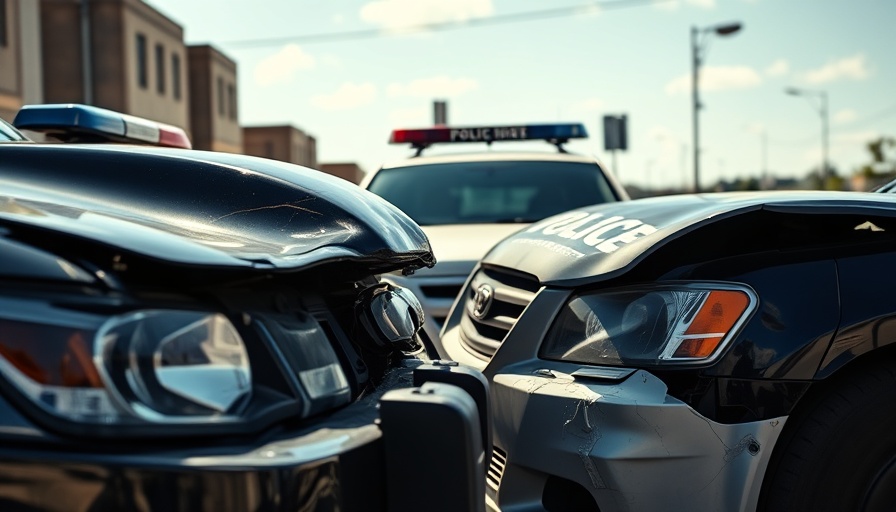
The Dramatic Chase: A Police Cruiser's Unintended Outcome
In a daring sequence that unfolded on a Tuesday morning, a stolen patrol car became the center of a wild, 30-minute chase in Aurora, Colorado. The story began when a 31-year-old man allegedly stole an Aurora police cruiser parked outside a residence after a burglary incident. Remarkably, despite the presence of anti-theft technology in the cruiser, the device had not been activated, allowing the suspect to escape unnoticed.
As officers responded to the burglary reports, they quickly learned that the very vehicle assigned to enforce the law had fallen into the wrong hands. This is not just a troubling incident but a stark reminder of the vulnerability even law enforcement faces. The chase led the officers through multiple streets, highlighting the thrilling yet dangerous game of pursuit that often occurs in emergency situations.
Accident or Strategy? The Police Response
When it became evident that the suspect had lost control of the vehicle after blowing a tire, the Aurora police took decisive action. An officer crashed into the cruiser, effectively bringing the chase to a halt. Both the officer and the suspect sustained injuries but were fortunate enough to be released from the hospital shortly after.
This approach raises questions about the training officers receive regarding vehicle pursuits and the protocols guiding such high-stakes decisions. The balance between ending a chase safely and ensuring the well-being of everyone involved—both officers and civilians—forms a crucial part of police protocols. How officers are trained to use their vehicles as a tactical tool in such scenarios speaks volumes about law enforcement safety and effectiveness.
What Went Wrong? The Gaps in Anti-Theft Technology
The incident's underlying details about the patrol car's anti-theft system illuminate a larger topic about police equipment reliability and the importance of technology in public safety. The police cruiser was equipped with an anti-theft device designed to prevent unauthorized operation after the officer exited. But, it was inactive at the time of the theft.
This raises vital questions regarding police technology policies and equipment maintenance protocols. Could more stringent checks and balances prevent such oversight? Policymakers and law enforcement leaders should evaluate these processes critically to improve overall operational integrity.
A Broader Discussion: Police Community Trust and Safety
The Aurora incident reflects not only on the challenges of law enforcement but extends to the relations police departments foster with the communities they serve. Trust is the cornerstone of effective policing; events such as this one can jeopardize community confidence, especially amidst growing scrutiny on police practices across the nation.
Reassessing the deployment of resources and transparency in operational protocols can go a long way in mending and bolstering these essential trust relationships. Moreover, police technology needs to be reliable and effective to maintain that trust. The recent surge in discussions about police reform and transparency further accentuates the need for responsible practices in law enforcement.
Conclusion: Reflecting on Officer Safety and Accountability
The incident serves as a potent reminder of the risks faced by officers and the lapses in security measures that could have catastrophic consequences. As Aurora police work to ensure this does not happen again, the need for rigorous training, reliable policing equipment, and open lines of communication with the community is vital.
As industry stakeholders reflect on this chase, it’s vital to consider not only the immediate ramifications of such events but also the overarching narratives they contribute to in the broader discourse of public safety, law enforcement accountability, and community trust. It's time for police departments to take proactive measures to ensure the safety of officers and the communities they serve as we collectively move forward.
 Add Row
Add Row  Add
Add 

 Add Element
Add Element 


Write A Comment